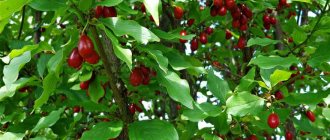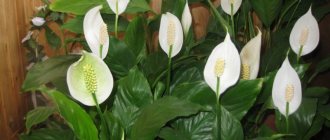- Let's take a closer look at autumn crocuses
- How do autumn crocuses differ from spring ones?
- The best types of autumn crocuses
- Conditions favorable for growing autumn crocuses
- Features of planting autumn crocuses
- Caring for autumn-blooming crocuses
- Digging up and replanting autumn crocuses
- Preparing for winter
- Diseases and pests of autumn crocuses
- Reproduction of autumn crocuses
- Autumn crocuses: features of forcing
- The best varieties of autumn-blooming crocuses for forcing
- Video: autumn planting of crocuses
When touching crocus flowers flash on the canopy of bright fallen leaves, like small harbingers of spring, it seems as if time has flown backwards. It would be difficult to find a more delicate autumn-flowering plant. Crocuses, opening their flowers at the end of the gardening season, are the closest relatives of everyone's spring favorites.
Saffron or beautiful crocus (Crocus speciosus).
Autumn crocuses are grown according to almost the same rules as ordinary crocuses, only these plants bloom not after a long winter, but before it begins.
Let's take a closer look at autumn crocuses
Crocuses, or saffrons, are our favorite primroses. They are easy to grow and even easier to care for. But of the 15 groups, including almost 40 species of crocuses actively used in gardening, not all are spring flowering plants.
A large group of crocuses blooms in the fall , at the very end of the season. Autumn crocuses bloom after the leaves begin to fall, and this spectacle - the contrast of a typically spring miniature flower and a garden withering for the winter - cannot leave you indifferent. These species bloom just as briefly as the spring species, but much more spectacularly.
Like spring species, autumn crocuses are suitable for growing both as a garden plant and in pots and even indoors. True, in the last rank their flowering periods shift and depend on when the bulb is planted, and not on the natural cycle.
It is better to use them:
- “wild” spots under bushes and trees;
- as touching accents in small groups scattered around the garden;
- in borders and in the foreground, along the edge of ridges;
- near ponds and other water bodies;
- for decorating the lawn;
- as a seasonal accent on alpine slides or rockeries.
How do autumn crocuses differ from spring ones?
When we talk about forcing, we most often mean flowering primroses indoors in winter or early spring. Delicate touching “living bouquets” that finally bloom after a long winter leave few people indifferent and invariably fill their hearts with warmth. But autumn forcing is no less a bright event, because “primroses” mysteriously appear when the summer season is over, the garden is almost empty, spring is far behind, and only the long winter months lie ahead.
Forcing is an agrotechnical technique that results in plants flowering at unusual times. It is difficult to say whether the flowering of crocuses in autumn is a forcing from a scientific point of view, since in this case we are talking about a special group of autumn-blooming crocuses. However, using the technique described in this article, it is also possible to vary the flowering of this type of crocus and have it bloom by a specific autumn month, or even delay the appearance of flowers until the New Year.
Most people associate crocuses with spring primroses. But experienced gardeners know well that crocuses are divided into spring-blooming and autumn-blooming. In appearance, the flowers of the first and second do not have any external differences: they are goblet-shaped, consist of six delicate petals and an expressive column of stamens in the center of the flower.
The only difference is that spring crocuses bloom at the same time as their leaves. While almost all autumn-blooming crocuses do not have leaves - bunches of linear leaves appear in the spring without flowers and die off at the beginning of summer, in the fall only flower stalks appear from the ground.
Note! Due to their external similarity, growth characteristics and flowering time, autumn crocuses are often confused with colchicum (colchicum). But colchicum and crocus are completely different plants. Colchicum leaves are wider, the bulbs are larger, and the flowers are also larger in size compared to crocuses.
Spring-flowering crocuses have become more widespread among gardeners due to the fact that this group is more extensive and is represented on sale by a huge number of varieties and hybrids. However, perhaps an equally important reason why autumn crocuses are less popular lies in the late flowering time of this species.
Only residents of private houses or gardeners living outside the city all year round can enjoy the touching flowers of autumn crocuses. But the overwhelming number of flower lovers grow plants in their dachas. Such crocuses bloom exactly when most summer residents move to the city and show up at their dacha less and less often (some species and varieties bloom even in November). Therefore, unfortunately, they often fail to admire the blooming crocuses.
And in other years, when winter comes too early, the crocuses do not have time to bloom at all, and their buds disappear under the snow. It is for this reason that, having once acquired bulbs of autumn crocuses, I decided to organize an analogue of spring forcing for them and make them bloom not in an empty garden, but in my city apartment.
In bright sunshine, crocuses open their flowers wide.
What you need to know about crocuses
Crocus (second name “saffron”) is a low, bulbous flower that belongs to the large Iris family. Crocus bushes are small and, depending on the variety, reach a height of up to 12-13 cm. Crocuses are loved because they are one of the most attractive and delicate primroses and do not stop blooming, even if the last March snow covers them.
Not all lovers of this flower are aware that there are many varieties of saffron that bloom in the fall, when most garden flowers have already lost their attractiveness, and the garden is waiting for the approach of winter.
If you pay attention to the photo of autumn crocus flowers, it will become obvious that they go well with evergreen ground cover plants. Such autumn flower beds will become a symbol of the continuation of summer in every garden.
Crocuses are flowers that grow in open soil, but like other bulbous flowers, they can be forced to create a delicate flowering bush on your windowsill in the winter season.
Crocus inflorescences open during daylight hours, and at night they turn into small closed buds reminiscent of tulips. Depending on the variety, the inflorescences are yellow, blue, purple or white. Two-color inflorescences, the petals of which consist of purple and white stripes, look very attractive.
The bulbs of young crocuses have a rounded appearance, while older bulbs are flattened and reach a diameter of 3 cm. When dry, the bulbs are covered with scales. Saffron bulbs are said to be edible. But, of course, no one eats them.
But the most valuable and expensive part of the inflorescence is its middle, the so-called stigma with stamens. This part of the flower is a valuable medicine, a natural dye and a well-known aromatic seasoning.
The best types of autumn crocuses
The only yellow-flowered Sharoyan crocus , the color of which is dazzling saffron. It has wide leaves and a large, graceful flower that looks like a small sun. This crocus blooms in September and October.
The hill (or valley) crocus will not exceed 12 cm in height, but the long, up to 6 cm petals with a milky base color and purple stroke stripes are decorated with charming orange streaks in the throat.
Crocus Banata has beautiful linear autumn leaves up to 15 cm long and a month-long flowering period, during which each bulb produces 1-2 flowers at the height of the leaves. Its flowers are very large, spectacular, a little like irises, with long, almost five-centimeter perianth lobes, yellow-lilac anthers and a cold lilac color.
Saffron, or Crocus Banat.
The crocus is pretty with almost round perianth lobes, a surprisingly lush bunch of stamens and a beautiful play of color - dark purple on large veins and lighter, watercolor on the petals themselves. Its leaves bloom only after flowering, which is protracted and covers both September and October.
Crocus Pallas , whose flowers look like outlandish stars. This is a plant with narrow leaves that bloom only in spring, the flowers of which appear in the second half of September and, although they reach a height of only 5 cm, are very spectacular. Reaching almost 5 cm in diameter, they are distinguished by their lily-shaped shape and very light, shining white-lilac color with a beautiful tuft of stamens.
The beautiful crocus is one of the largest autumn-colored crocuses. Its leaves develop in the spring and reach a length of 30 cm. But the real “show” begins in September, when the corms produce flowers up to 7 cm in diameter, white or lilac, with surprisingly touching longitudinal veins, watercolor stains, the ideal shape of wide, pointed edge of the petals and symmetrical structure. Everything about this crocus is beautiful - the bright orange columns with yellow specks of dust in the center, and the translucent texture of the mother-of-pearl petals. Crocus speciosus has a huge number of varieties colored in intense and dark blue, light blue, and lilac colors.
Among them, the most popular are:
- variety “Oksinan” with a dark purple, ultramarine tint of wide perianths and gracefully pointed ends of the petals;
- variety "Albus" with an original cream tube and snow-white petals;
- variety "Cassiope" with amazing contrasting veins along the most delicate blue flowers;
- variety "Aitchisonu" with large lilac flowers, more than 7 cm in diameter;
- variety "Conqueror" with huge azure-blue flowers;
- variety "Artabir" with a sky blue color, emphasized by dark veins.
9.Varieties:
9.1.Valley saffron - Crocus vallicola
Flowering bulbous perennials with thin and long petals, often colored white. The tips of the petals are sharp. Often the petals have thin lilac stripes. This variety belongs to the autumn-blooming mountain crocuses and is often found in the Caucasus. Flowers appear even before leaves form.
↑ Up,
9.2. Spring crocus - Crocus vernus
A widespread variety among flower growers. They are miniature plants with large bulbs. The leaves are uniform, dark green, hard, straight with a pronounced central vein. The peduncles are short, bearing single delicate flowers at the tops. Petals can be painted in white, lilac, purple, yellow shades. Often on the surface of the petals there are thin longitudinal stripes of a darker color. The flowering period begins in spring and lasts about 3 weeks. Interestingly, at night and in cloudy weather, the flower petals remain closed.
This species was used by Dutch breeders to develop modern large-flowered crocus varieties.
↑ Up,
9.2.1. Crocus vernus Remembrance
One of the varieties bred on the basis of spring crocus. These are large-flowered crocuses that can be used for forcing at home. Foxes are green, narrow, with a narrow and light stripe running along the central vein. Peduncles are short and powerful. The flowers are goblet-shaped with plain, brightly colored petals of lilac or purple.
↑ Up,
9.3. Crocus (saffron) sativus or sativus - Crocus sativus
An autumn-blooming crocus with long, red threads inside the flower - anthers. It is from this flower that the well-known seasoning, saffron, is made. The leaves are dark green, long, arched, monochromatic. Peduncles are short, vertical. At the tops of the peduncles there are single, large flowers with wide-open lilac petals. The center of the flowers is often darker in color.
↑ Up,
9.4.Crocus Kochi - Crocus kotschyanus
Quite large autumn-flowering plants, the bulbs of which can reach 9 - 10 cm in diameter. Flowering often occurs after the leaves die. The leaves are dark green, narrow, linear, with a central silver vein. The flowers are delicate, single, with thin, oblong petals in pastel shades of lilac, pink or white. There are almost always thin dark stripes on the surface of the petals. The center of the flowers has a yellow-orange circle.
↑ Up,
9.5.Crocus speciosum
Bulbous perennials with autumn flowering, 10 - 15 cm in height. The flowers have oblong, sometimes pointed petals of delicate shades and resemble colchicum. The center of the flower is often lighter. Flowering occurs after the leaves die. The leaves are green, linear.
↑ Up,
9.5.1. Crocus Cassiopeia - Crocus speciosus Cassiope
One of the late-blooming varieties, with bluish or lilac flowers in delicate shades. A distinctive feature of the plant remains the bright, branched stamens in the upper part.
↑ Up,
9.5.2.Crocus speciosus conqueror
Plants with autumn flowering. The flowers are bluish or lilac, located on thin, erect peduncles. The bright, orange stamens contrast perfectly with the pointed petals of this variety. The center of the flowers is yellow.
↑ Up,
9.6.Korolkova saffron - Crocus korolkowii
Perennial primroses with narrow, dark green, hard, straight leaves. There is a light stripe in the center of the leaf blades. Peduncles are quite short, often do not exceed the height of the leaves, and bear small, very similar buds at the tops. The flower petals are painted in a bright, golden-orange hue, and their outer side remains brown or burgundy.
↑ Up,
9.7.Crocus chrysanthus
Perhaps one of the most diverse group of buds in the color of the plant. Flowers can be colored in shades of yellow, white, lilac, purple. The outer side of the petals often remains dark - purple, brown or burgundy. Some varieties may have buds colored simultaneously in several shades, smoothly transitioning from one to another.
↑ Up,
9.7.1. Crocus chrysanthus Fuscotinctus
A spring-flowering variety of crocus with very thin, needle-like, dark green leaves. A distinctive feature of the plant is its goblet-shaped flowers with golden petals. The outer side of the petals has longitudinal brown or burgundy stripes.
↑ Up,
9.7.2.Crocus Goldilocks
The variety is characterized by half-opened bright golden flowers with uniform, oval petals. Flowering occurs in spring.
↑ Up,
9.7.3.Crocus chrysanthus Aubade
Very tender plants with spring flowering, have glossy, slightly curved, green leaves. Flowers with white, fairly wide petals and a yellow center. The stamens, like most crocuses, are bright orange.
↑ Up,
9.8.Crocus sieberi
Even for crocuses, this variety remains one of the smallest - plants can reach only 7 - 10 cm in height. Bulbous perennials with early spring flowering. The leaves are narrow, linear, green. The flowering is so profuse that the leaves often remain completely hidden by the flowers. The peduncles are quite short and often remain below the leaves. The flowers are wide open, with 6 oblong petals, painted in white, pinkish, lilac or purple shades.
↑ Up,
9.8.1.Crocus Tricolor - Crocus sieberi Tricolor
One of the brightest varieties of Crocus Sieber has flowers with wide, almost rounded petals, painted in 3 different shades - purple, white and orange in the center of the flower.
↑ Up,
9.8.2.Crocus sieberi Firefly
Delicate flowering herbaceous plants with bluish-green, thin leaves and powerful, short, vertical peduncles. These plants apparently got their name “firefly” for the bright color of their buds - lilac or pinkish flowers with an orange center contrast very nicely with the dark leaf blades.
↑ Up,
9.9. Banat crocus - Crocus banaticus
An autumn-flowering variety, often the plant height does not exceed 5 cm. The leaves are linear, green, monochromatic. Flowering occurs after the leaves die; the flowers have delicate, purple, lilac, pink or white petals. During flowering, the plants emit a pleasant sweetish aroma. The structure of the flowers is interesting - 3 petals grow to large sizes, another 3 remain small and are located inside the flower. The buds are lilac, branched at the top of the stamen. Sometimes the flowers of the Banat crocus resemble the buds of its closest relative, the iris.
↑ Up,
9.10. Multi-colored crocus - Crocus versicolor
Spring flowering plants have dark green leaves with a light stripe in the center. Peduncles are white, short. The flowers are often half-open and have white or lilac, pointed petals and a yellow center with orange stamens.
↑ Up,
9.10.1. Crocus picturatus - Crocus Versicolor Picturatus
A white-flowered variety, the flower petals have dark, purple stripes on the outside.
↑ Up,
9.11. Sharoyan's Crocus - Crocus scharojanii
Autumn flowering variety. The plants have elegant and austere, goblet-shaped, golden-orange flowers that remain half-open. Interestingly, among autumn crocuses this species is the only one with golden flowers. Flowering occurs after the leaves die.
↑ Up,
9.12. Crocus Tommasini - Crocus tommasinianus
The variety has flowers with pale lavender or purple petals. Peduncles are thin, vertical. The flowers close at night and open in the morning, but usually remain closed in rainy and cloudy weather. The plants are classified as primroses. Each bush has 3 - 5 narrow, linear leaves during flowering.
↑ Up,
Conditions favorable for growing autumn crocuses
Autumn crocuses are much more flexible in their light requirements. Sharoyan and valley crocus love shade or partial shade, but other species are better provided with diffused lighting, sunny and bright places, or at least a semi-shaded location. For autumn crocuses, a growing strategy with a sunny location in spring and autumn and a shaded location in summer is suitable.
Sharoyan's saffron, or Sharoyan's Crocus (Crocus scharojanii).
Crocuses do not like winds and drafts, so protected areas are chosen for them. The thing is that the flowers of these plants are sensitive to cold autumn winds, and the more protection their “neighbors” provide them, the better.
The location for planting autumn crocuses must be selected so that during the dormant period they do not suffer from getting wet and grow in dryness and warmth. That is why you need to choose either elevated, well-drained places (for example, on alpine hills and rockeries). Another option is to lay drainage during planting.
Pay attention to the soil too. For crocuses, choose light, loamy soils that drain water well. The only exception is the Dutch varieties and hybrids, which tolerate even heavy soil. Be sure to make sure that the soil is neither acidic nor alkaline: crocuses love neutral soils. But they are not so demanding when it comes to fertility: the richest soils and rather poor soils are suitable for crocuses.
Features of planting autumn crocuses
Before planting crocuses, you need to prepare a site for them. Mix sand or fine gravel into the soil to improve drainage, and add mature manure and leaf soil to poor soil. Autumn crocuses will also respond with gratitude to the application of phosphorus-potassium fertilizers (instead of nitrophoska it is better to use superphosphate and potassium nitrate). It is better not to use peat or slak it with lime. In those areas where there is a high risk of getting wet, make raised ridges or lay drainage at a depth of 30-40 cm.
Saffron, or Hill Crocus (Crocus vallicola).
Autumn-flowering crocuses require a slightly different approach to planting: if spring ones are planted in August-September, then autumn-flowering ones need to be purchased before flowering, which traditionally begins in September. The best time for them is from June to the end of the first ten days of August. Do not buy flowering bulbs - they will be weakened and will take several years to recover.
Before planting, inspect the bulbs again: they should be heavy, with dense shells, not crushed and soft, with a clearly visible renewal bud (small tubercle). Autumn-blooming crocuses should "wake up" soon, and if buds are not visible on them, it is better not to plant them at all, or plant them in a pot and watch for signs of growth.
Autumn crocuses are planted only in groups of 5 or more, placing the plants at a distance of 5-6 cm between plants. Crocus bulbs are planted at a traditional depth equal to twice the height of the bulbs themselves (from 5 to 15 cm). On heavy soil, leave a distance from the top of the bulb to the edge of the soil equal to the height of the bulb.
It is not necessary to strictly monitor the centimeters: crocuses, unlike many bulbous ones, form retracting roots and the young bulbs themselves will settle in the soil at a comfortable depth. After planting, mulch the soil with sand to protect against slugs. Be sure to mark the planting location with sticks or other markers.
5.Growing at home
5.1.Containment temperature
When growing in pots, create the conditions in which crocuses are found in nature.
, bulbs of spring-flowering varieties must undergo preliminary cold stratification for 12 - 15 weeks at a temperature of about 5 ° C.
° C for some time until the first signs of growth appear.
When the leaves reach a height of 3 - 5 cm, the plants are transferred to a warmer place - with a temperature of 10 - 15 ° C.
After flowering, the temperature can be increased slightly - to about 17 ° C. If the air temperature rises above 20 ° C, the flowering time will be greatly reduced.
↑ Up,
Low night temperatures , bordering on negative, contribute to prolongation of flowering time In such conditions, buds will decorate the plants for 3 weeks.
Do not be afraid of low temperatures - in their natural environment they tolerate frosts down to 10 - 15 ° C even when they are blooming.
↑ Up,
↑ Up,
5.2.When the home crocus blooms
Under natural conditions they bloom in very early spring ; flower stalks often break through the snow. Among the crocuses there are not only primroses, but also varieties that bloom in the autumn months .
When forced, it can bloom at any time of the year. The flowering period can last 2 - 3 weeks if the plants are kept cool and away from direct sunlight.
When growing for forcing, you should be guided by the fact that the first buds appear approximately 3 months after planting the bulbs .
↑ Up,
Unfortunately, the specific timing of flowering may depend not only on maintenance conditions, but also on varietal characteristics, so in order to get a flower by March 8 , it is worth adapting to a specific variety over the course of a couple of years.
For flowering in the second half of winter or early spring, it is better to use spring-flowering varieties, and for forcing in autumn, of course, it is better to use autumn-flowering varieties.
For forcing, large-flowered plants of Dutch selection are most often used - they will fully comply with the declared characteristics even when grown at home.
↑ Up,
5.3.Lighting
During the dormant period, when the crocus plant loses its leaves, the bulbs are stored in a dark place.
During the forcing period, place the pots in a well-lit place where they can receive 4 - 6 hours of direct sun every day.
When the buds open, you can move the crocuses to the shade, as in such conditions the flowers will remain open longer. Exposing flowers to direct sunlight can shorten flowering time .
If there is a lack of sunlight, artificial lighting can be used. Using LED or fluorescent lamps, crocuses are illuminated in the morning or evening hours to increase the length of daylight.
↑ Up,
5.4. Growing crocus at home - forcing
How to care for crocus at home? In homes, crocuses are often used for forcing - using different planting dates, you can get a living bouquet from the bulbs by any desired date. Only mature, strong bulbs are suitable for forcing.
The planting material must be the same size - for bulbs of different sizes, flowering dates may shift, and the buds can also be of different sizes.
Such plantings bloom in the house for 1 season ; in the second year, it is better to move the plants to open ground.
Some varieties, such as golden-flowered crocus, are not suitable for forcing - even with careful adherence to agricultural practices, the buds do not open and remain dry in the foliage.
↑ Up,
After flowering, the leaves will begin to yellow and die - do not remove them as they will continue to feed the bulbs. Only flower stalks with fading buds should be pruned. Such flower stalks are separated from plants using a sharpened sterile instrument.
Plants that bloomed at home should be planted outside . The bulbs are removed from the substrate when the above-ground part dies off and a dormant period begins.
↑ Up,
Before storing the planting material, it is cleared of the remnants of old soil. After flowering, the bulbs are stored in a dark and cool place with a temperature of about 5 - 9 ° C, in a peat mixture, which is occasionally moistened, or in paper bags.
Every week the bulbs are taken out and sorted , checking for rot.
Autumn-flowering plants require a higher temperature for storage - about 20 ° C - it is under these conditions that flower buds are formed.
↑ Up,
5.5.Soil
Crocus needs soil rich in organic matter and well-drained, for example a mixture of leaf humus and a small amount of peat.
The flower does not like substrates whose pH levels are low - in other words, acidic soils. Neutral or slightly alkaline soils will be preferable for keeping plants .
To improve moisture permeability, it is worth adding coarse river sand or perlite and vermiculite to the soil.
The finished mixture should be nutritious and easily allow air to pass through, allowing the root system to breathe.
↑ Up,
5.6.Transplanting crocuses
Crocuses are planted annually, in autumn or spring, in shallow bowls with large drainage holes.
- A drainage layer of expanded clay, clay shards, broken bricks or pieces of polystyrene is placed at the bottom of the pot.
- Fill the pot with nutritious and loose soil mixture, so that the surface of the substrate is 5-6 cm below the walls of the pot.
- In order to get a fairly lush bush, 5 - 10 bulbs are planted in each pot.
- Place the bulbs on the ground so that there is about 2 - 3 cm of soil between them. The bulbs should not touch the walls of the pot when planting.
- From above, the planting is covered with a layer of substrate 2-3 cm high. In the upper part, instead of soil, you can use river sand - it will quickly remove moisture from the bulbs after watering and will prevent the development of rot.
- The planted flowers are watered with water at room temperature. The next watering should be carried out only when the first leaves appear above the soil surface.
It is better to plant faded bulbs in the garden; they are unlikely to bloom twice at home.
↑ Up,
5.7.Feeding crocuses
Annual planting in fresh soil allows crocuses to do without additional feeding in most cases.
If the soil is not nutritious enough, pamper the flower with liquid mineral fertilizers for flowering plants 1 - 2 times a month before flowering . After flowering, it is worth carrying out 1 - 2 more feedings , preparing the bulbs for the dormant period.
The nutrient solution is diluted to half the dose recommended on the package and added to moist soil , previously watered abundantly. Contact of a concentrated solution on the root system in dry soil can cause a chemical burn to the roots.
↑ Up,
You should not feed only planted plants and flowers that have any signs of disease.
When growing crocuses, you should not use mineral fertilizers with a high nitrogen content - with such fertilizing, the bulbs become overgrown and loose, and are easily susceptible to rot and fungal diseases.
Crocus can be fed with both mineral solutions and organic matter. As organic , you can use cow or horse manure, a solution of bird droppings, and humus. All organic matter used must be well rotted.
Plants are more likely to tolerate a lack of nutrients by using up the reserves that are in the bulbs than an excess amount of fertilizer.
↑ Up,
5.8.Air humidity
Does not require spraying and can tolerate fairly dry air. Atmospheric humidity is increased mainly to protect the flower from the invasion of harmful insects.
To increase humidity, you should not use spraying - droplets of moisture falling on flowers and buds can ruin their appearance.
↑ Up,
It is better to place the flower pot on a tray filled with wet gravel and periodically spray the pebbles. With this growing method, the surface of the water should always be below the bottom of the pot.
room humidifier helps increase humidity , but you can do without it - just place any wide, open container of water .
Keep plants in ventilated areas with good flow of fresh air.
↑ Up,
5.9.Water crocuses
The frequency of watering when growing crocuses will depend on the ambient temperature and the stage of flower development.
After planting, the first waterings should be limited and quite rare - at this time the crocus does not yet have leaf plates that evaporate moisture into the atmosphere. Excessive watering at this time will lead to rotting of the bulbs.
As the green mass develops, the frequency of watering is gradually increased.
↑ Up,
Regularly moisten the soil in pots when the crocus forms buds.
After flowering, when the leaf blades begin to turn yellow, gradually reduce the frequency of watering so that after the leaves die off, the bulbs are in almost dry soil.
Water the plants with settled tap water at room temperature.
It is best to water the plants in a tray - in such conditions the bulbs will grow roots to meet the incoming moisture.
↑ Up,
Caring for autumn-blooming crocuses
Offering a taste of spring blooms in an atypical season, these small plants are easy to grow. Crocuses do not need watering, except for the coincidence of winters with little snow and extreme droughts in the spring, when during the period of active growth of autumn crocus foliage it is necessary to replenish the moisture needs of the bulbs and water the crocuses at least several times. Plants do not need watering in the fall.
Pallas's saffron, or Pallas's saffron (Crocus pallasii).
During the entire phase of active development at the beginning of the season, crocuses need potassium and phosphorus. They can be fed once in early spring. Apply nitrogen to fall crocuses with caution: vigorous green growth can be detrimental to late-season blooms. In autumn, fertilizers are not applied to crocuses.
Digging up and replanting autumn crocuses
Crocuses can be replanted and moved to a new place at the same time as planting - from June to August for autumn-flowering species. Autumn crocuses (if you do not plan to increase the number of plants and propagate crocuses, give them to friends and neighbors or sell them), do not replant more than 3-5 years. Wait for signs of the “nests” being full and only then plant the bulbs. This way the flowering will be more beautiful and the bulbs will be stronger.
After digging, the bulbs must be dried at room temperature in a well-ventilated place for 2-3 months. After drying, they remove old roots and loose, bad scales, sprinkling all damage with wood ash. It is better to discard bulbs with traces of rot immediately.
Saffron, or pretty Crocus, also pretty, variety 'Zephyr' (Crocus pulchellus).
Features of crocuses
Crocus is considered a low-growing plant, the height of which generally does not exceed ten centimeters. The bulbs reach thirty millimeters in diameter and have a round or flattened shape. The surface of the bulbs is covered with scales, and they also have a bunch of fibrous roots. Shoots of this plant do not grow. During flowering or after it, narrow basal leaf layers of a linear shape grow, they are collected in a bunch and covered with scales.
Single goblet-shaped flowers reach twenty to fifty millimeters in diameter. The flowers can be pigmented cream, purple, gold, white, blue, purple or orange. They bloom on a leafless short peduncle and are surrounded by membranous scales. There are varieties whose flowers are two-colored or spotted. The duration of mass flowering is from fifteen to twenty days. All types and varieties of this plant are divided into fifteen groups.
Diseases and pests of autumn crocuses
Autumn crocuses are considered more “reliable” plants than spring-blooming species. They most often suffer from rot caused by excessive soil moisture, but are less often affected by other diseases. In new varieties, dry rot is common, manifesting itself initially in small spots, then merging into entire lesions. Bulbs affected by rot should be immediately thrown away and destroyed. Rodents love to feast on them, so if they are close to nests and there is increased activity on the site, it is better to plant the bulbs in special nets.
Reproduction of autumn crocuses
Autumn types of crocuses are easier to propagate than spring ones: they form up to 7 daughter corms annually. Autumn crocuses form “nests” - a group of related bulbs, which, after the old bulb dies and a new one forms, become independent plants. They are the best to use to increase the collection of crocuses, because only this method preserves the varietal characteristics of the plants. When digging and replanting, the daughter plants are simply separated and used as independent plants. Since they bloom for 3-4 years, usually next year most of the separated bulbs will bloom.
Banat saffron, or Banat saffron (Crocus banaticus).
Crocuses can also be propagated by seeds, but this method does not allow preserving the characteristics of varietal crocuses, and the fruiting of autumn species is an irregular phenomenon and dependent on the vagaries of the weather. The seeds of autumn crocuses are collected in the spring, after natural stratification, sowing in the same year in summer or autumn. It is best to sow in boxes or pots, covered with non-woven material or black foam. Plants are grown cyclically from the very first year, but they bloom only 4-5 years after sowing.
4. Propagation of crocuses
Crocus propagates by small daughter bulbs or seeds. The bulbs are separated from the mother bulbs during transplantation. The first buds will decorate the plants obtained by division after 2 - 3 years .
You can also grow crocus from seeds. Seed propagation is quite easy and when growing a flower under it you can often find self-seeding.
Not all varieties form seeds, even when pollinated. When grown in the central zone, autumn-flowering varieties do not have time to form seeds, so this method of propagation is suitable only for spring varieties.
After flowering, the plants produce seed pods that become dry and brown when ripe. Each seed pod contains large, reddish-brown seeds.
After collection, the seeds are dried and stored until spring in a dry and cool place, packed in fabric bags or paper parcels.
↑ Up,
- Before planting, the seeds are soaked in a solution of epin or zircon for half an hour and dried.
- In the spring, small cups or pots with drainage holes are prepared for sowing seeds.
- Expanded clay is placed at the bottom of the cups - it will allow moisture to drain faster from the pot after watering.
- Fill the pots with a nutritious and loose soil mixture, which is thoroughly moistened.
- Seeds 2 - 3 pieces. sow on the surface of the soil and cover the top with soil about 7 - 10 mm thick.
- After sowing, the soil surface is also moistened with a spray bottle.
- For 3 weeks, the cups with seeds are sent to the vegetable compartment of the refrigerator so that they undergo cool stratification.
- After stratification, the cups are placed in a room at room temperature.
- Cups with seedlings are placed in a well-lit place with plenty of reflected sunlight, out of direct rays.
- To create a greenhouse effect, the seedlings are covered with a plastic cap or transparent plastic film. Every day the cover is removed and the crops are ventilated, each time increasing the ventilation time.
- 2 - 4 weeks after sowing, shoots may appear for the first time.
↑ Up,
As the plants develop, they grow into larger pots. Feed the flowers every time after picking - after 10 - 15 days.
Plants obtained from seeds bloom only after 4 - 5 years .
Since seed propagation requires a long period of time before flowering, it is carried out mainly by breeders to develop new varieties of flowers.
↑ Up,
Autumn crocuses: features of forcing
I first purchased planting material for autumn-blooming crocuses several years ago at the end of September. These were medium-sized bulbs with rather long white sprouts about five centimeters long.
I planted the bulbs in a liter pot quite densely at a distance of 1-2 centimeters from each other and to a depth of 5 centimeters. The soil was used ready for flowering plants. I did not add additional fertilizer, since the bulbs had already accumulated a sufficient amount of nutrients and buds.
Flowering occurred approximately 1.5-2 weeks after planting. The total duration of flowering of autumn crocuses was about two weeks and fell in mid-late October.
At this time, the weather was relatively warm and there were no significant frosts, so I kept my crocuses on the open balcony. By evening they closed their flowers, and as soon as the sun began to shine brightly above them, they opened completely. Since the blooming of crocuses on the balcony in the middle of autumn made an indelible impression on me, I decided to reproduce this experience further.
As soon as the temperature began to regularly drop below zero at night, I watered the containers with faded crocuses a little and placed them in the vegetable section of the refrigerator. There they stood until spring (if you have a basement, you can move the bulbs there).
In the spring, as soon as the snow melted, I fed the plantings with complete mineral fertilizer and buried the pots with bulbs in the garden, forgetting about them until the fall. At the beginning of September, I dug up the buried pots with dormant crocuses, watered them well and put them back in the refrigerator. There the bulbs remain until their noses show a couple of centimeters from the ground (sometimes crocuses do not want to wake up in the refrigerator and have to be brought into the heat).
Features of forcing autumn crocuses.
I move the pots with awakened bulbs to the balcony, where they bloom approximately 1.5-2 weeks after the start of active growth. On an open balcony, they are essentially in outdoor conditions, so their flowering lasts quite a long time, as in open ground - about two weeks.
Autumn-flowering cocus can also be kept on a windowsill indoors, but in this case, due to the high temperature and dry air, their flowering will last a little less.
To extend the overall flowering period of crocuses when planting bulbs in pots, you can plant them at different depths. In this case, the more buried bulbs will bloom a little later and the “living bouquets” will be in bloom much longer. Also, if you keep crocuses indoors, then to prolong flowering, at least at night, take them out to the open balcony or put them in the refrigerator.
Due to the fact that the growth of crocuses placed in the refrigerator is slowed down, their flowering can be postponed in time, adjusted to the desired date, and even postponed to the winter months. Most varieties of autumn-blooming crocuses are easily amenable to such forcing.
But sometimes it happens that instead of the “spouts” of future flower stalks, the bulbs expel foliage. In this case, you should not expect crocuses to bloom this season. The reasons for this behavior of flowers are not completely clear, so for autumn forcing it is better to plant several pots with a reserve, so that you are guaranteed to have something to admire in the fall.
saffron (Crocus sativus) behaves in a similar way This species is also the least winter-hardy among the fall-blooming crocuses. Therefore, for autumn forcing and growing in the garden, it is better to choose other varieties and varieties.
Planting crocuses in open ground
When to plant
Spring crocuses are planted in the ground in the fall, and autumn-blooming ones in the summer; a sunny site is chosen, although crocuses grow well in partial shade and even in the shade. The soil for growing crocuses is preferably light, dry, loose and nutritious. When preparing a site for crocuses, it is advisable to place fine gravel or coarse river sand in the soil for drainage. As an organic additive, compost, rotted manure or peat with lime are added to the soil for digging, since crocuses do not like acidic soils. Ash is added to clay soil. For those species that do not tolerate wet soils, arrange high beds with crushed stone or gravel as a drainage layer. Planting material must be free from flaws and damage.
In the photo: How crocuses bloom
Autumn planting
To see crocuses bloom in the spring, their bulbs are planted in open ground in September. Planting crocuses in loose soil involves planting the bulb to a depth twice its size. If the soil is heavy, then a depth of one size will be sufficient. The average distance between the bulbs is from 7 to 10 cm. After planting, the area is watered.
- Tritsirtis: cultivation and care, types and varieties
Do not thicken the planting, because crocuses grow in one place for 3 to 5 years, and during this time one bulb becomes overgrown with a whole colony of children, and the area with crocuses turns into a continuous carpet of flowers. After the five-year period, the crocuses need to be planted.
Planting crocuses for forcing
Many flower growers miss their favorite garden flowers in winter, so they grow them in their apartment even in winter. The easiest way to grow a bouquet is from bulbs, including crocuses. Large-flowered Dutch varieties are most suitable for forcing. Crocus bulbs of approximately the same size are planted from five to ten pieces in shallow wide pots in order to obtain a whole bouquet of primroses by the appointed time. The soil for crocuses planted for forcing must be neutral, loose, air- and water-permeable.
We described the procedure and conditions for forcing crocuses in a separate article.
Crocus bulbs are not thrown away after flowering; they continue to be watered and even fed with a weak solution of complex mineral fertilizers for indoor plants. When the leaves begin to turn yellow, watering is gradually reduced until it stops completely. After the leaves have completely dried, the bulbs are removed from the pot, cleaned of soil, wrapped in a napkin, placed in a cardboard box and stored in a dark, dry place until planted in open ground in the fall.
The best varieties of autumn-blooming crocuses for forcing
Beautiful Crocus "Albus" (Crocus speciosus 'Albus'). The most fragrant of all autumn-blooming crocuses, it has a very pleasant honey smell. The flower is star-shaped, the petals are pointed, snow-white, the anthers are yellow, the style is bright orange. Plant height is 15-20 centimeters. The diameter of the flower is 3.5 centimeters.
Beautiful Crocus "Albus" (Crocus speciosus 'Albus').
Crocus pulchellus 'Zephyr'. The flowers are a delicate light lilac color with expressive veins of a darker tone. In the center of the flower there are yellow-orange anthers and a style. The shape of the flower is cupped, the edges of the petals are rounded. There is practically no aroma. The diameter of the flower in full bloom is about four centimeters. Plant height is 10-15 centimeters.
Crocus Kochi "Zonatus" (Crocus kotschyanus Zonatus).
Crocus Kochi "Zonatus" (Crocus kotschyanus Zonatus). Crocuses are a very unusual pink-purple color. The stamens and style are bright orange. The flower shape is goblet-shaped, the tips of the petals are slightly rounded. The diameter of the flower when opened can reach six centimeters. The flowers have a pleasant aroma. Plant height 15 centimeters. Flowering time is on average 10 days.
Beautiful Crocus "Albus" (Crocus speciosus 'Albus').
Crocus trellised (Crocus cancellatus). A fairly new species, available for sale in 2021. The flowers of this species are very beautiful two-colored. The overall tone is light lilac, against which the outer sides of the petals have a bright purple pattern in the form of stripes and venation. In the center of the flower there are bright yellow stamens and a style. The flower shape is goblet-shaped, the height of the glass is 4-5 centimeters. The height of the peduncle is 10-15 centimeters.











